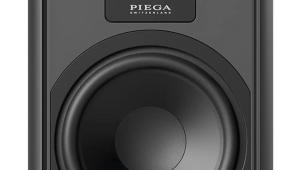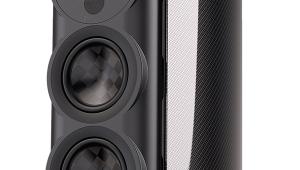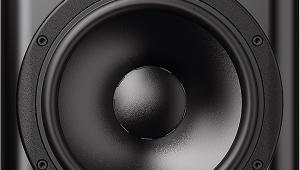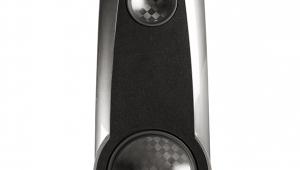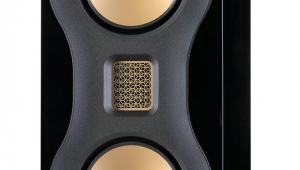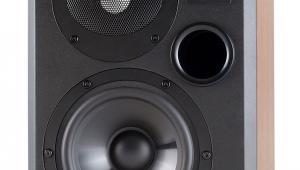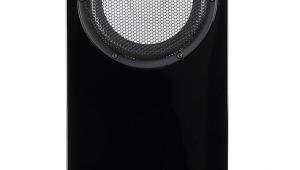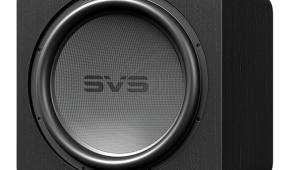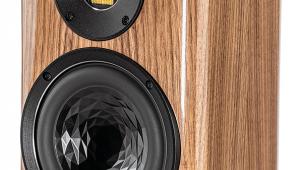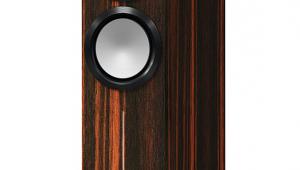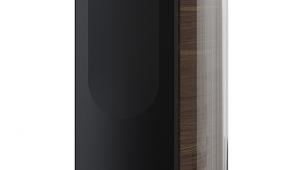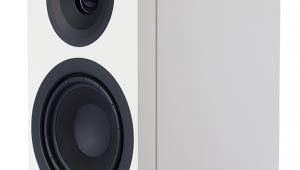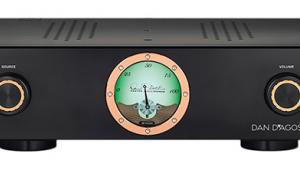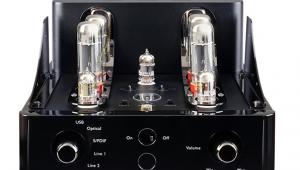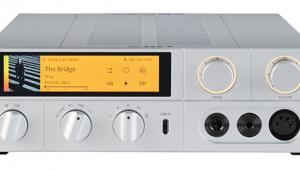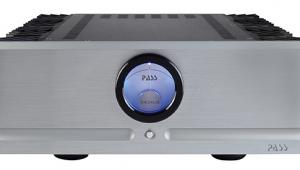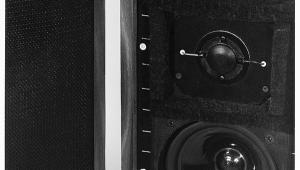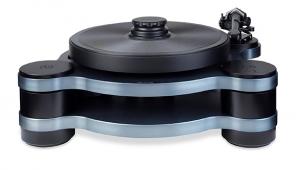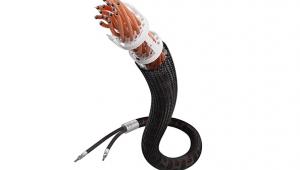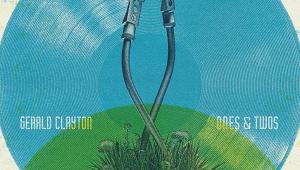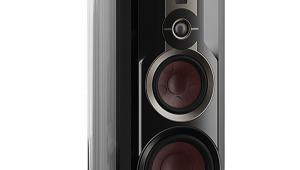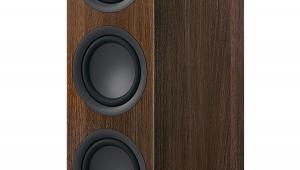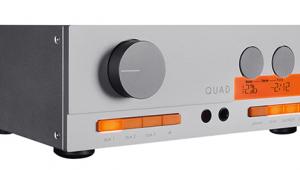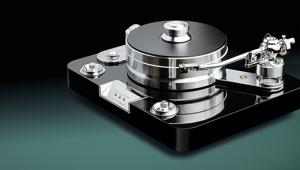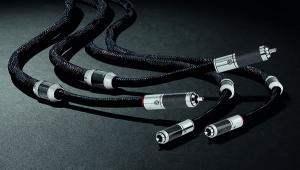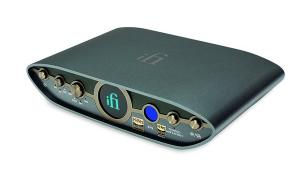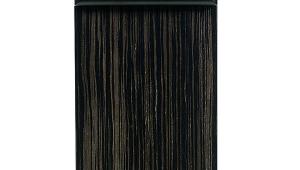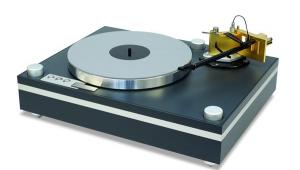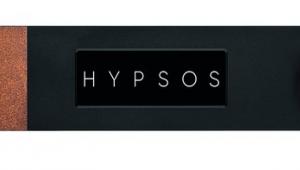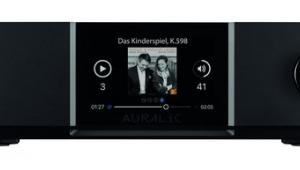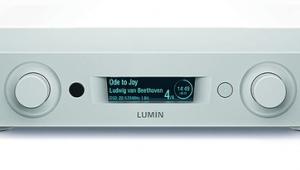KEF Q11 Meta floorstanding loudspeaker


KEF launched its Q series Meta loudspeakers toward the end of 2024 with plenty of fanfare, but to any hi-fi enthusiast with half an eye on this brand, the announcement came as no surprise. We’d already seen how the introduction of the ‘revolutionary’ Meta Absorption Material Technology (MAT) on KEF’s LS50 Meta [HFN Jun ’21] was followed by Meta updates of its Blade [HFN May ’22], Reference [HFN Jun ’23] and then R series [HFN Jan ’24]. At the same time, KEF’s bottom-of-the-rung Q range was last updated in 2017. So, with hindsight, the Q series Meta, topped by the £1999 Q11 Meta floorstander seen here, is about as expected as anything gets in hi-fi.
That Meta suffix, by way of a recap, refers to a development of the company’s Uni-Q driver array, specifically the MAT disc that’s now placed behind the tweeter. Via a maze-like surface of quarterwave resonators, each tuned to a specific frequency, this acts to absorb rear radiation – ‘99% of the unwanted sound’ says KEF – and thus clean up the speaker’s HF behaviour [see PM's Lab Report].
Into the shadow
The Uni-Q array has been part of the KEF playbook since the late 1980s and features a dome tweeter placed at the acoustic centre of a midrange unit – two units behaving as a single point source. Key developments over time have been marked as ‘generations’, up to the current 12th-gen-with-MAT design. Yet this does not mean, perhaps obviously, that the version on the Q11 Meta is the same as that on, for example, KEF’s Blade One Meta or R11 Meta [HFN May ’22 and Jan ’24].
For one thing, the vented aluminium dome tweeter here is 19mm rather than 25mm across, and the surrounding aluminium cone midrange is a 100mm, not 125mm, design. Additionally, the MAT disc is a new single-layer type, consisting of 20 tuned channels, while the two-way speakers in the Q series Meta [see boxout] use a 15-channel MAT disc.
Surrounding the Q11 Meta’s Uni-Q array is KEF’s ‘Shadow Flare’, a waveguide that extends the profile of the midrange cone to ‘direct’ the output of the tweeter away from the cabinet edges, and reduce diffraction effects. This is a new feature for the series, leveraged from KEF’s higher-end designs, as is the ‘Flexible Decoupling Chassis’ that aims to limit vibrations from the midrange motor system reaching the speaker’s cabinet walls.
Raising the woof
Below its Uni-Q system, the Q11 Meta features a trio of 165mm woofers. These are ‘hybrid’ types, with a layer of aluminium atop a paper cone, and for this new lineup feature an upgraded motor system promising higher efficiency, and revised geometry to improve structural rigidity. The bass driver’s first break-up mode is cited at 2.6kHz [see PM's Lab Report], or some two octaves beyond the 480Hz bass/mid crossover of this three-way model. While these changes make the new flagship Q series speaker more easily comparable with KEF’s step-up R series, there’s another upgrade almost hiding in plain sight.

The previous Q series range-topper, the two-and-a-half-way Q950, appeared to have a trio of (200mm) woofers but two of them were auxiliary bass radiators (ABRs). The Q11 Meta has three complete bass drivers, reflex-loaded via a rear-firing port and supplied with two-part foam bungs for user tuning.
Measuring 1112x317x380mm (hwd), once installed on their outrigger feet, the Q11 Metas are reasonably svelte for triple-woofer floorstanders, and although the cabinet design is somewhat ‘boxy’ they look slick and modern. There are none of the flashy colourways of the Reference or R series here, just Satin Black, Satin White and Walnut finishes, the second of those changing the colour of the drivers/surrounds from black to white. Fabric grilles, that affix magnetically, are supplied.
![]() Space invader
Space invader
Given the tried-and-trusted power of Primare’s PRE35/A35.2 duo [HFN Dec ’19], in conjunction with Matrix Audio’s Element X2 Pure streamer/DAC [HFN Dec ’23], KEF’s Q11 Metas impressed with the size and heft of their sound – these may have modest pricing but they still can handle a big space. The overall ‘voicing’, to a degree akin to that of the R series Meta models, favours warmth and richness over outright analytical introspection, but still sounds authentically ‘audiophile’. Value for money is assured.
‘My Soul I’, by Anna Leone [Wandered Away; AllPoints 44.1kHz/24-bit download], is a slow but grand-sized track that makes the sweet-but-raspy voice of the singer its main attraction. KEF’s speakers threw a spotlight on her, revealing the crack of a syllable here or a pause for breath there, while fingers plucked and picked at an acoustic guitar. Well-balanced against all this fine detail were the weighty, dreamy synths and buoyant bass, the Q11 Metas nailing this track’s contrasted nature.
Even more about vocal performances is ‘They Can’t Take That Away From Me’ from Ella And Louis [Verve Recordings, 96kHz/24-bit download], where Ella Fitzgerald’s singing comes across as effortless with a hint of sassiness, Armstrong’s a gorgeous baritone with playful vibrato. Through the Q11 Metas, this set – laid down in 1956 – sounded both fresh as a daisy but still of its time, with quietly mixed backing and mono presentation. It was only Armstrong’s trademark trumpet licks, which pop up here and on the equally delightful follow-up ‘Under A Blanket Of Blue’, that hinted at the Q11 Meta’s ‘entry-level’ stature, sounding a little strident on occasion.
Blues to brawn
At other times, these new floorstanders were completely at ease with the task at hand, delivering Gary Moore’s ‘Still Got The Blues’, from the album of the same name [Virgin CDV 2612], with excellent extension and focus on the bassline and an alluring central presence to his vocal and guitar melodies. The strings during the pre-chorus were fluid and clear, and when Moore switches pick-ups to send his solo flying, the shift in tone was explicitly revealed, instantly turning what had been almost easy listening into air-guitar excitement.
This feeling of involvement and vigour was also in evidence with Chase and Status’s ‘Hocus Pocus’ [No More Idols; Mercury/Vertigo 2745135], where the duo splice a drum ’n’ bass style breakbeat with atmospheric samples and deep, growling bass. Through the Q11 Metas these lows were given their due prominence, and steered clear of bloat, helping the piece as a whole sound attacking and rhythmically spot-on.

Switching to John Williams’ theme for Oliver Stone’s JFK, performed by the Dallas Winds [John Williams At The Movies, Reference Recordings RR-142SACD], found the speakers constructing a cohesive musical portrait, revelling in acoustic instruments. The military-style percussion, brass and woodwind were well-delineated and danced across a soundstage with good depth. Even more light and shade was on show with Williams’ ‘Imperial March’ from Star Wars: The Empire Strikes Back, where the orchestra’s force drives the main motif, followed by delicate instrumental flourishes.
Gold standard
It’s a well-balanced sound and there’s no fear of listening ‘fatigue’ – the Q11 Meta’s treble is smooth and grain-free, and the midrange well-resolved. Indeed, these speakers conjure an inviting performance from any genre. Fleetwood Mac’s ‘Gold Dust Woman’ [Rumours 2001 remaster, Rhino Records; 96kHz/24-bit] was superbly staged, with real presence to the twangy guitar strings and drum beats in the outro. Meanwhile, Max Richter’s ‘On The Nature Of Daylight’ [The Blue Notebooks, Deutsche Grammophon 483 5668] sounded poised and precise, the appeal all about the integration of low and high strings.
This instrumental builds from a lone cello to a wealth of tones, its minor-key harmonies pulling on the heartstrings. The Q11 Metas – which earlier sounded in their element with full-throttle electronica – here demonstrated their musical, measured side. There’s more to KEF’s latest affordable speakers than meets the eye...
Hi-Fi News Verdict
Not for KEF a modest revamp – the new Q11 Meta represents a complete overhaul of its biggest entry-level floorstander. Now a three-way, ported design boasting various trickle-down technologies, this speaker comfortably outperforms its price point by blending musical detail with plenty of weight and scale. Tremendous fun to listen to, it should be considered nothing less than a hi-fi bargain.
Sound Quality: 88%
